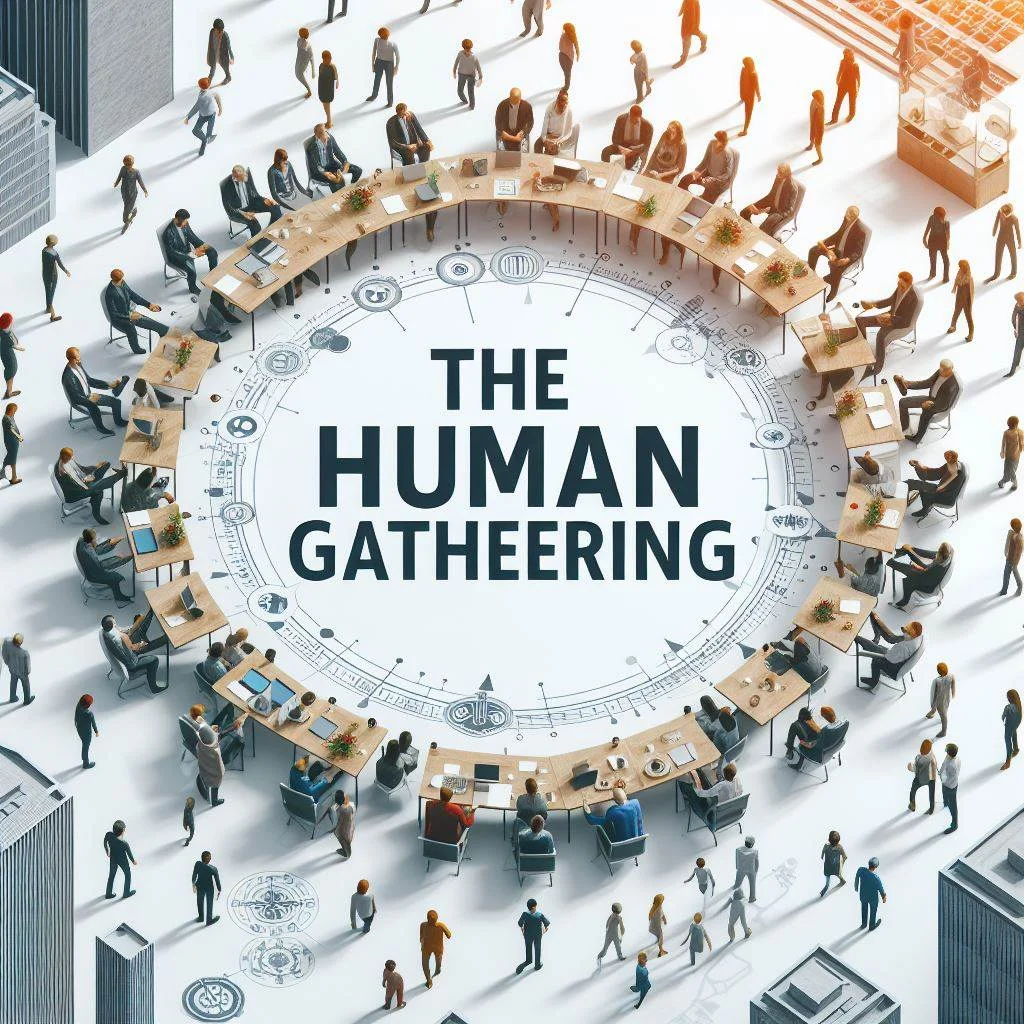
Is the Human Gathering Fake
Is the Human Gathering Fake? Exploring the Debate
In today’s digitally-driven world, our modes of interaction and communication have undergone profound changes. The advent of social media platforms, messaging apps, and virtual meeting tools has seemingly diminished the need for physical proximity. Yet, amidst this digital revolution, the essence of human gathering—coming together in person for shared experiences—remains an enduring aspect of human nature. This article delves into the ongoing debate surrounding the authenticity of human gathering in the digital age, examining its relevance, significance, and societal impact.
The Argument Against Human Gathering
Critics who contend that human gathering is fake often point to the increasing reliance on digital communication. They argue that modern technology has made it effortless to connect with others, regardless of physical distance. Platforms like Facebook, Instagram, and Twitter enable individuals to maintain relationships, share experiences, and express themselves without face-to-face interaction. Additionally, virtual meetings and teleconferencing tools facilitate remote collaboration, further diminishing the need for physical gatherings.
Moreover, skeptics argue that online interactions lack the depth and authenticity of face-to-face communication. They suggest that digital platforms foster superficial connections marked by curated self-presentation, filtered images, and scripted interactions. In this context, human gathering may be viewed as outdated or redundant, as virtual interactions offer convenience without temporal or spatial constraints.
The Case for Human Gathering
Despite the prevalence of digital communication, many argue that human gathering remains essential for socialization and community building. Face-to-face interactions offer unique benefits such as nonverbal cues, emotional expression, and shared physical experiences. Gathering in person allows individuals to forge deeper connections, build trust, and strengthen relationships in ways that virtual interactions cannot replicate.
Furthermore, human gathering plays a vital role in fostering a sense of belonging and identity within communities. Whether it’s a family reunion, a community event, or a cultural celebration, coming together in person reinforces bonds, traditions, and shared values. These gatherings provide opportunities for collective memory-making, storytelling, and cultural exchange, fostering cohesion and solidarity among participants.
The Impact of Technology on Human Gathering
While technology has undoubtedly transformed the way we interact, its impact on human gathering is nuanced. On one hand, digital communication tools have facilitated global connectivity and accessibility, breaking down barriers of time and space. Virtual gatherings have become commonplace, enabling collaboration, education, and entertainment on a global scale.
However, the rise of digital communication has raised concerns about the quality and authenticity of human interaction. Screen-mediated communication can feel impersonal or detached, lacking the warmth and intimacy of face-to-face interaction. Additionally, excessive screen time has been associated with feelings of loneliness, isolation, and social disconnection, underscoring the importance of balancing virtual and in-person interactions.
Navigating the Future of Human Gathering
As we navigate the digital landscape, the future of human gathering remains uncertain. While technology offers new opportunities for connection and collaboration, it also presents challenges and pitfalls. Finding a balance between digital connectivity and authentic human connection is essential, ensuring that we prioritize meaningful interactions and shared experiences.
Ultimately, the authenticity of human gathering lies not in the medium of communication but in the depth of connection and richness of experience. Whether online or offline, coming together with others—sharing stories, laughter, and moments of joy—remains a fundamental aspect of human experience.
Challenges and Opportunities Ahead
Looking ahead, several challenges and opportunities await in the realm of human gathering. Technology will continue to evolve, offering new ways to connect and interact with others. Virtual reality (VR) and augmented reality (AR) hold the promise of immersive experiences that bridge the digital and physical worlds, potentially revolutionizing the way we gather and collaborate.
However,
as we embrace technological advancements, it’s crucial not to lose sight of the value of in-person interaction. While virtual gatherings offer convenience and accessibility, they may lack the depth and richness of face-to-face encounters. Balancing the benefits of digital connectivity with the need for authentic human connection will be paramount in the years to come.
Moreover,
societal shifts such as urbanization, globalization, and demographic changes will continue to shape the landscape of human gathering. As communities become more diverse and interconnected, there will be a growing need for inclusive spaces and events that celebrate cultural diversity and promote cross-cultural understanding.
Strategies for Cultivating Authentic Connections
In light of these challenges and opportunities, several strategies can be employed to cultivate authentic connections and meaningful experiences in the context of human gathering:
Create inclusive spaces:
Ensure that gatherings are welcoming and inclusive, embracing diversity and fostering a sense of belonging for all participants.
Prioritize face-to-face interaction:
While digital communication has its place, prioritize opportunities for in-person interaction whenever possible, as they offer unique benefits for building relationships and strengthening communities.
Encourage active participation:
Design gatherings that encourage active participation and engagement, rather than passive consumption. This could include interactive workshops, group discussions, and collaborative activities that invite attendees to contribute their ideas and perspectives.
Embrace diversity:
Celebrate cultural diversity and embrace different perspectives, recognizing the richness that comes from engaging with individuals from diverse backgrounds.
Promote empathy and understanding:
Foster empathy and understanding among participants by creating opportunities for dialogue, storytelling, and shared experiences that promote empathy and understanding.
By implementing these strategies,
we can create gatherings that are not only meaningful and impactful but also inclusive and authentic, reflecting the diversity and complexity of the human experience.
Conclusion
In conclusion, the concept of human gathering is far from fake; it is an essential aspect of socialization, community building, and personal growth. While technology has transformed the way we connect and interact with others, the value of face-to-face interaction remains as relevant as ever. By embracing technology while prioritizing authentic human connection, we can create gatherings that are meaningful, inclusive, and enriching for all participants. As we navigate the complexities of the digital age, let us not forget the power of coming together in person—to share stories, laughter, and moments of joy—and to forge genuine connections that transcend the boundaries of time and space.








